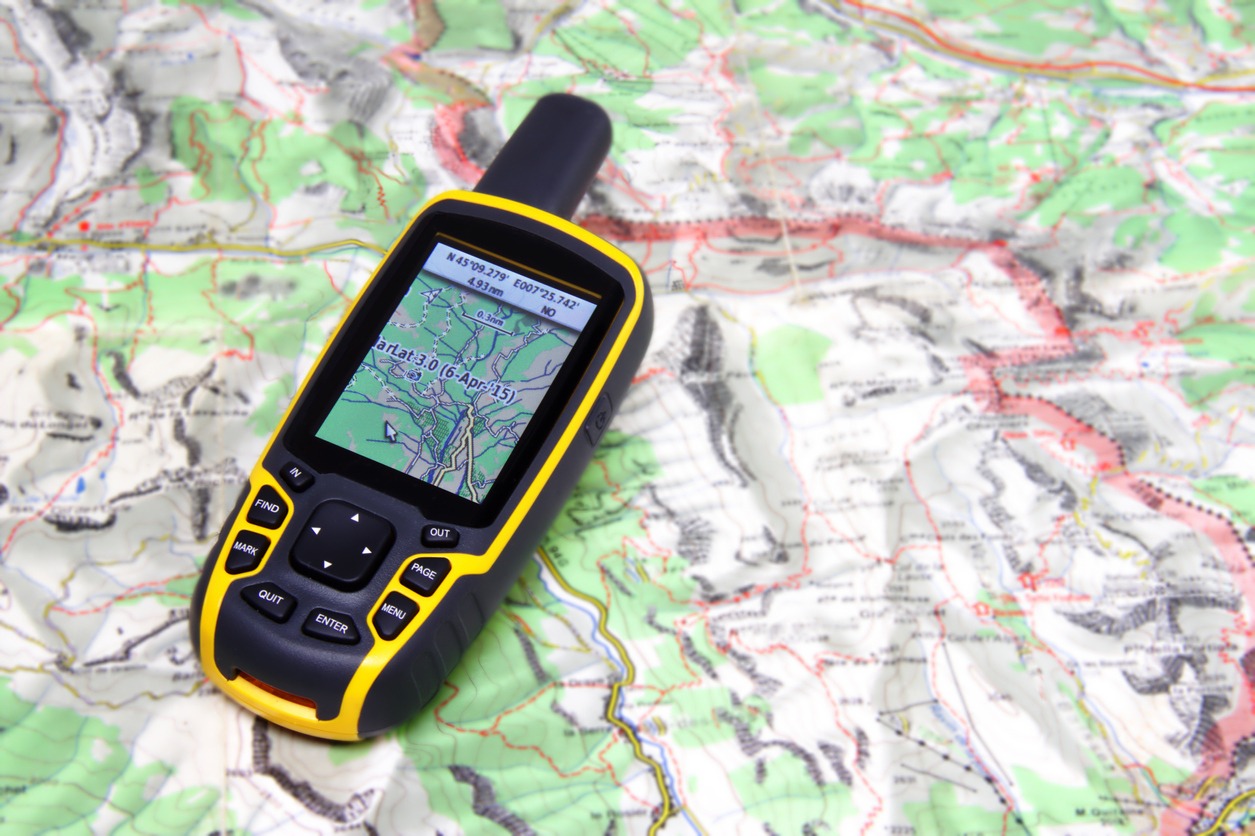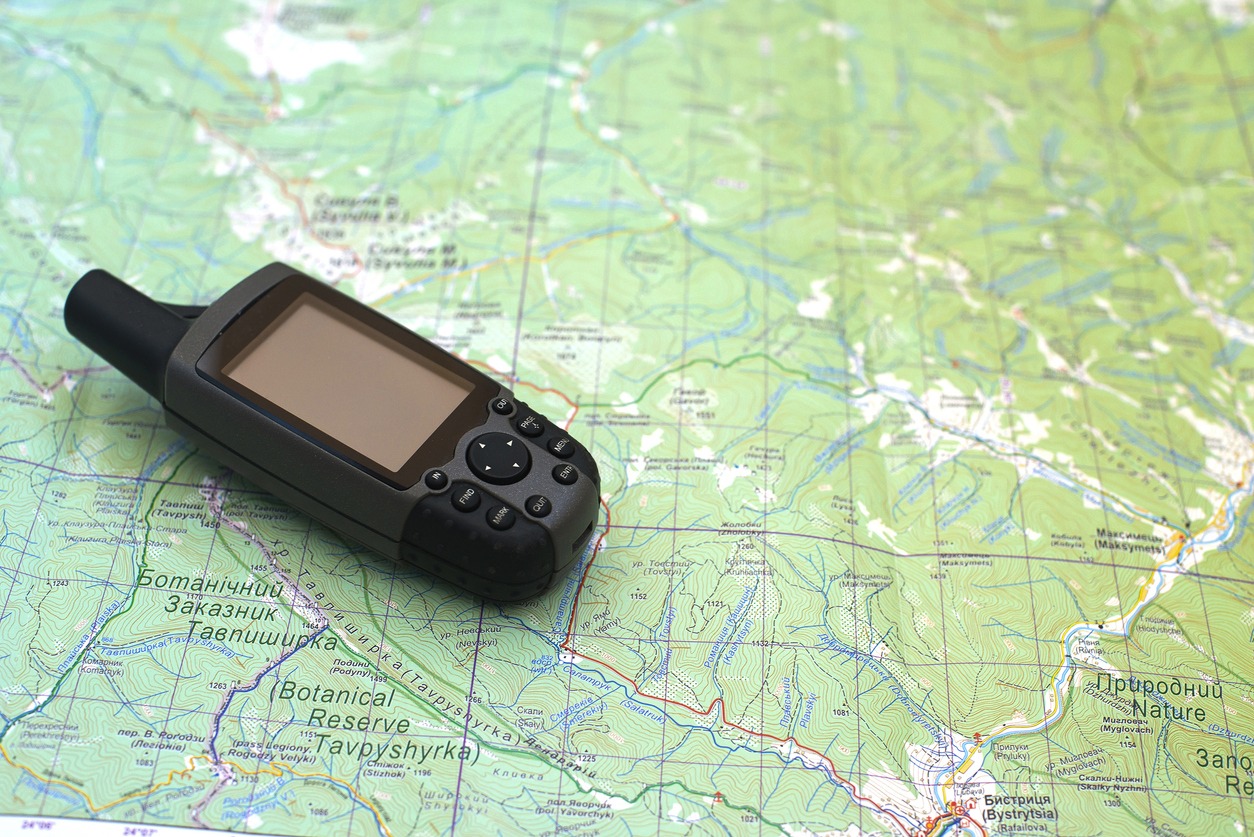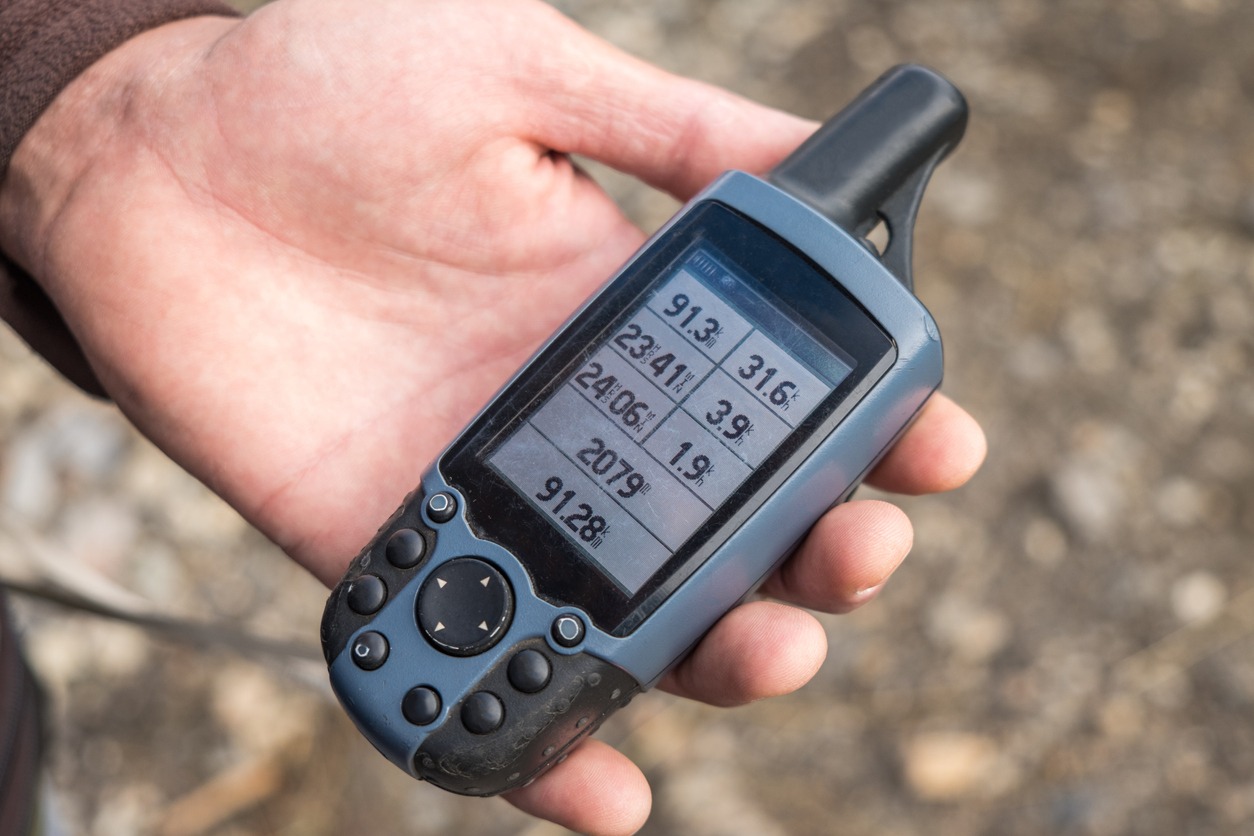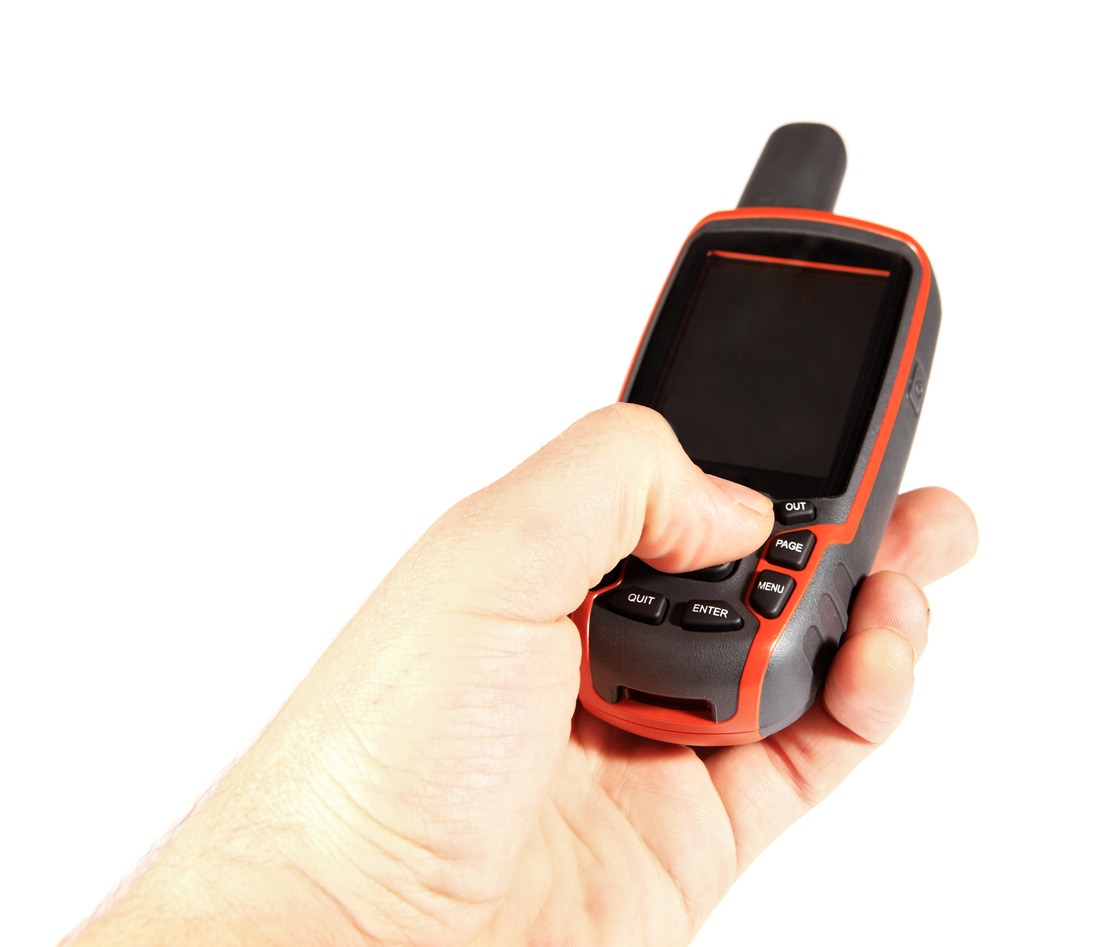When making a trip to the outdoors whether you’re hiking, climbing or hunting, most people want to feel equipped and secure. We also realize how crucial it is to know your location at any point in time. Unfortunately, mobile signals don’t always work in the wild, which is where a GPS can come in handy.
GPS helps hunters and hikers calibrate the sunset and sunrise timings, which helps ensure your activity never gets delayed. Also, the chances of getting lost are minimum to zero when the device is set up correctly. Of course, the best GPS models come with specific features, which you need to be aware of.
What Is a GPS?
The full form of GPS is Global Positioning System, which is used to help hikers get to their destination and then back to their original position. Most hikers and hunters need a handheld GPS device because when trekking, you may lose phone signals, causing you to lose touch with others. If you have a GPS receiver, you can use it to get to your destination safely. Most GPS devices come with the ability to enter or mark coordinates, allowing you to navigate to your location safely.
Even if you purchase a simple GPS, it will come with a wide range of settings and features. Some essential functions of a GPS include displaying your position, recording your track, navigating point to point, and displaying your trip data.
One of the most basic tasks of a GPS is to show you where you are. It does so by displaying your coordinates and position on its base map on the screen. It can also record your tracks. When you turn your tracking on, the GPS automatically starts laying down points called track points at regular intervals. These points allow you to track your steps or evaluate the path you traveled. This feature is handy when you’ve accidentally taken the wrong path or want to return to your original location.
Basic GPS also have a navigate point-to-point function, which directs you by giving you the location and direction to your destination or waypoint. Before you set off, you can pre-mark your waypoint by entering its coordination. That way, you can have your location marked so that you know exactly where your destination is.
You will also find that after you are done with a trip, your GPS will tell you the cumulative stats of your trip. This odometer-like function is handy if you want to know how far you have come or high you have climbed during a particular trip.
Some GPS units also come with a powerful software program that you can use to manage your maps, analyze your trips, and even plan routes.
How To Set Up Your GPS
When you purchase a GPS, you must know how to set it up so that you are not confused when you set out on your trip. Most GPS devices allow you to customize your unit’s functions beforehand. Additionally, the setup menu usually has an overwhelming number of options, but you do not need to mess with these. One setting that you should look at before your trip is the position format menu. This menu includes position format and map datum.
Position format is the coordinates on your GPS. Your GPS has the ability to display the coordinates of your location in many different kinds of systems. You can change this setting to whichever system you are most used to and comfortable with. When you use your GPS to mark your waypoints, ensure that you choose the same system as the one on your map or book you are using. If you ever change the setting, your device will convert the information to match the current location.
The map datum is another important setting you should look at before you set off. The main idea of those settings is to set your GPS to match the topographic map’s datum or the datum of any trail guide you are using. If you do not set up the map datum, the GPS may place the coordinates at the wrong location. Datum is related to the geographic modeling of the Earth when the map was produced.
What To Look Out for When Buying a GPS
A handheld GPS is an essential tool for hikers and hunters. Not only does it prevent you from getting lost, but it also allows you to navigate foreign terrain with confidence and ease. Although hikers and hunters can use their phone GPS, there are a few advantages that handheld GPS have over these new innovations.
Dedicated handheld GPS devices are much more rugged and water-resistant, which makes them much more durable. You can easily take them with you on your adventures and not worry when you accidentally drop them or get caught in the rain. Handheld GPS also comes with field-replaceable batteries, meaning you don’t need to charge them. As long as you have a set of batteries, you can keep using them for extended periods.
GPS devices also have superior satellite reception, meaning you can use them in places where you would not get signals otherwise. Their features are also pretty robust as they are developed for outdoor use.
1. Battery Life
When purchasing a handheld GPS device, ensure you buy one with a long battery life. If you tend to go on long hikes or hunting trips, you would need a GPS device that lasts for at least 10 hours. Otherwise, you will have to change the batteries and keep extras on you.
When purchasing a GPS device, ensure you purchase one that uses AA batteries, as they are the most readily available. Rechargeable batteries are even better. Some rechargeable batteries have a solar charger, which is perfect for when you are out in the wilderness.
AA batteries are usually cheap and have decent lifespans, which is why they are the most used in the industry. However, you will need to switch out the batteries when they drain. The main advantage of rechargeable batteries is that they remove the need to buy and carry extra batteries. They are also cost-efficient as you won’t need to keep repurchasing them.
2. Display
The GPS device you purchase must have a decent display. For a good and clear overview, your handheld GPS device should have at least a 2-inch display with good resolution. Many different kinds of modern GPS are available on the market that come with high-quality touchscreens. Although touchscreens seem the easiest to operate, they are not as suitable for hiking. Buttons usually work much better than touchscreens, but there is a learning curve that you need to overcome.
With the use of smartphones, touchscreens are becoming more and more popular in the handheld GPS market. Handheld GPS devices with such screens are straightforward to navigate because they are intuitive. You can use them in both landscape and portrait modes, making them easier to use.
Buttons are also common on handheld GPS devices because they are highly consistent. Most hikers and hunters complain that they cannot use their devices because they wear gloves when conditions are rough and cold. In such cases, buttons are convenient. They tend to add bulk to your devices and make them heavier to hold, but they can be used in any circumstance and are reliable. Touchscreen devices are much sleeker and low profile, meaning they are much lighter and easier to fit in your pocket.
Additionally, whichever screen you choose, you should ensure that it is readable. Having a larger screen is always beneficial as you can easily read it no matter the weather condition. The brightness and readability are important considerations. Ensure you choose one that has an anti-glare screen, good contrast, and backlighting.
3. Weight
For many handheld GPS devices, the weight corresponds with the screen size. The larger you want your screen to be, the heavier your device will be. When choosing a GPS, always factor in the weight so that you do not end up purchasing an extremely heavy one. You may want a large screen but ensure it is easy to use.
When hiking or hunting, you may carry a lot of items, and having a heavy GPS will only add to your load. Additionally, some like to hold their GPS device in their hand. If you purchase a GPS device that is too heavy, you may find it difficult to carry, and your hand may get tired after a while.
4. Construction
One of the most essential features of a GPS that you should consider is how sturdy it is. The material that your GPS is made of should be shock and abrasion-resistant. Ensure that the GPS you purchase has a robust design that can withstand all kinds of rough terrains. Hikers and Hunters usually move around rocky mountains and trails. If the GPS is accidentally dropped, it should not shatter and retain its shape and functionality. You should also check to see whether or not it is water resistant.
5. Mapping and Memory
All GPS devices come with a base map with major local features. These are extremely helpful in understanding the elevation gained/lost and other indicators. Ensure that you purchase one with topographic, road, and waterway mapping. You can usually buy much more detailed maps whenever you need them.
6. Comfort
When purchasing a handheld GPS device, you must purchase one that is comfortable. When you are in a crisis and need to find your way back, you should not be fumbling with your handheld device. Ensure that the case is made of material that can be easily gripped. This prevents it from slipping from your hand.
One of the best ways to ensure that a GPS is comfortable is to hold it in your hand. Turn the device 360 degrees to check if it feels unnatural or uncomfortable. If it bothers you, you should refrain from buying it.
7. Advanced GPS Features
If you are an experienced hiker or hunter, you will most likely need a GPS that does much more than basic GPS. Here are some advanced GPS features that you should look out for.
| Feature | Description |
| Altimeter | An altimeter provides you with details of the barometric pressure. This is extremely useful in detecting changes in pressure that will allow you to predict the weather. If there are worrying changes, you will be prompted to seek shelter or return to a safe spot. |
| Sun Tracker | A sun tracker is an excellent GPS feature when you go for longer excursions. Some GPS devices also come with calendars that indicate when the sun rises and sets. These are incredibly useful for telling when it is legal to hunt. |
| Waypoint Totals and Memory | This feature tells you navigation data and loads all your maps. The better the GPS device, the more information it will be able to save. |
| A High-Quality Display | A high-quality display is necessary to read all the different information your device is displaying. The readability usually goes down during different conditions. Still, if your GPS device is good quality, you will be able to read it even in bright sunlight. |
| Wireless Transfer | A GPS handheld device with a wireless transfer feature will enable you to send and receive signals from other compatible units. This is an excellent way to communicate with other GPS users using the same device. |
| Geofencing | Geofencing allows you to mark a territory so that you stay within it. This feature is handy if you are hunting, so that toy can remain in the legal range. |
FAQs
1. Is it worth getting a GPS device for hiking?
Yes. A GPS device is critical when you are out in the wilderness because it allows you to navigate your way through the trees and rocky trails to ensure you get to your destination safely.
2. Can you replace a handheld GPS device with your phone?
When hiking or hunting, you may be tempted to use your phone for GPS. However, when you go to a remote area where cell phone coverage is unavailable, a handheld device will be much better. GPS devices are connected to satellite networks, which allows them to be much more accurate than your phone.
3. What should I look for in a handheld GPS device?
When purchasing a handheld GPS device, ensure that it is durable, comfortable to hold, and has a large battery life. A good GPS device also has a large display that can show you all the data clearly in all weather conditions.
Conclusion
A GPS device is a must-have when you are going hunting or hiking. Gear such as hiking boots and hiking belts may keep you safe, but a GPS device allows you to reach your destination without getting lost. As this is such an important device, ensure that you purchase the right one. A good GPS device has a high-quality screen, is durable, and has a long battery life.



